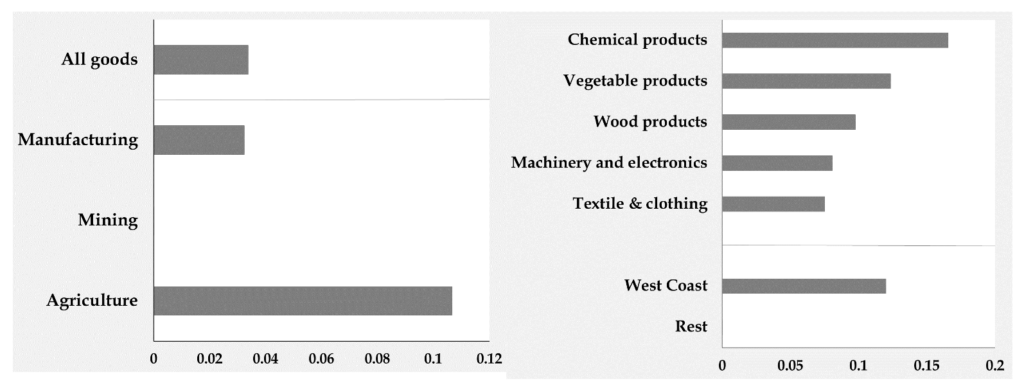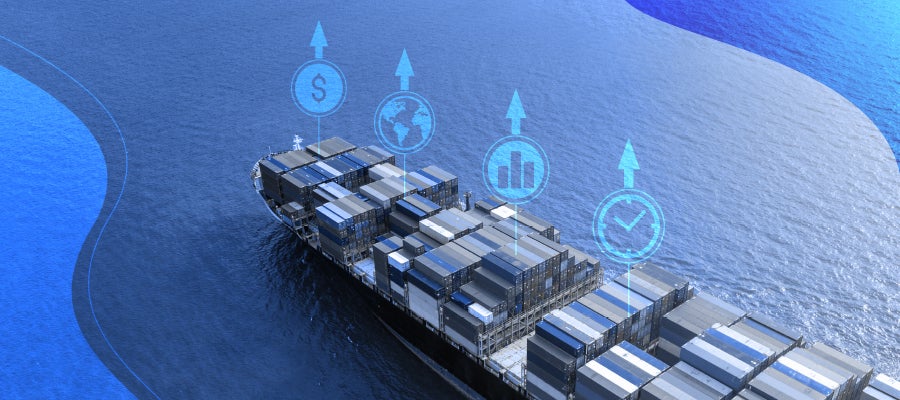In a recent blog post, we showed that shipping costs have substantially increased since the beginning of the pandemic and that such an increase was primarily associated with imports from Asia. In this new post, we explore whether and, if so, how such developments generated a domino effect on the transportation costs faced by Latin American and Caribbean countries (LAC).
Successive waves of technological changes throughout history have created the highly interconnected world we live in today, in which each of us is connected to every other person by six other people (“six degrees of separation”) and, according to Facebook data, less than four.
This interconnectedness also applies to global shipping.[1] Today, around 80% of trade is shipped indirectly – that is, shipments stop at least at one additional country before reaching their destination—and 90% of this indirect trade is channeled through a small number of hubs. Consequently, localized disruptions –especially those occurring in hubs—can reverberate throughout the entire network. Thus, containers grounded longer than usual cannot be used for new shipments on additional routes. As recently exemplified by The New York Times, “a shipping container that cannot be unloaded in Los Angeles because too many dockworkers are in quarantine is a container that cannot be loaded with soybeans in Iowa, leaving buyers in Indonesia waiting, and potentially triggering a shortage of animal feed in Southeast Asia”. Similarly, ships that serve routes with high shipping rates deprive other routes of capacity, which is fixed in the short run.
The question naturally arises to what extent increases in freight rates in Asia, particularly in China, were accompanied by similar movements in freight rates in LAC.[2] U.S. import data reveal that the rise in Asia’s maritime freight rates for given entry ports has been indeed associated with an increase in the respective LAC freight rates of exports to the U.S. (Figure 1, left panel). The relationship is economically important: the average ad valorem freight rate of LAC exports to the U.S. gained a full percentage point from January 2020 to November 2021, and around 10% of this increase can be considered linked to changes in Asia’s freight rates.[3]
There are non-trivial differences across sectors. The maritime transport-intensive agriculture and manufacturing sectors exhibit the strongest responses. Specific industries such as chemical products, vegetable products, wood products, machinery and electronics, and textile and clothing stand out (figure 1, right panel). The same applies to shipments that arrive in the U.S. via the West Coast. Ports such as Los Angeles and Long Beach experienced some of the longest delays and disruptions from the pandemic.
Figure 1: Increase in LAC freight rates in response to increases in Asia freight rates

What do these findings imply for policymakers?
The first aspect is that the degree of the world’s interconnectedness needs to be seriously considered. Logistics disruptions in given foreign markets can spread throughout the entire network and can therefore be associated with changes in the freight rates faced by the own country that are beyond the control of its authorities. This implies it is important to have an adequate understanding of the level of risk that such a degree of interconnectedness entails and design contingency and mitigation strategies accordingly, like mapping out well in advance alternatives in transportation and logistics, including being flexible in transportation modes, routes, and carriers.
The second aspect has to do with the factors of international freight rates that the authorities of a country can control, such as the level of port efficiency that has been shown to exert a direct impact on maritime transport costs. Port efficiency, in turn, is related to the quality of physical facilities and to other support activities, such as pilotage, towing and tug assistance, or cargo handling. Port efficiency can also be raised by adopting advanced digital platforms like port community systems. Freight rates can also be lowered by fostering competition among shipping companies. In general, reducing transportation costs through factors allows countries to face future shocks from a lower base level. The same holds for trade facilitation measures that streamline and expedite shipment processing at the borders.
International organizations such as the IDB and its Integration and Trade Sector can provide the LAC countries with financial and non-financial products to reduce their transportation and administrative processing costs, which in turn will promote trade and integration.
[1] The industry experienced multiple technological revolutions over time, including the introduction of the steamship in the second half of the XIX century and that of the container shipping in the 1960s.
[2] To answer this question, we resort to a statistical analysis to formally examine the relationship between the Asian freight rates (in particular China) on the freight rates of LAC countries while isolating the impacts of other factors. The main results are based on the coefficient estimate of B in the following regression: Y(cphym)= B ∙ X(hym) + FE(cph) + FE(cpym) + e(cphym); where Y(cpym) is the ad valorem freight rate associated with the US imports from a Latin American country c, product p, entering US port h in year y and month m; X(hym) is the median (over all the products) Asian freight rate for imports entering US port h in year y and month m; FE(cph) is a fixed effect at the country-product-port level; FE(cpym) is a fixed effect at the country-product-year-month level, and e(cphym) is the error term.
[3] Between January 2020 and November 2021, the average ad-valorem freight rate of Latin American trade increased by an average of 19% The direct impact from Asia was 1.9%, and therefore, the contribution from Asia was around 10%. The direct impact from Asia is obtained by multiplying the coefficient of the first bar in Figure 1 (0.0337) by the percentage increase in the Asian ad valorem freight rate between January 2020 and November 2021 (54.9%).


Leave a Reply